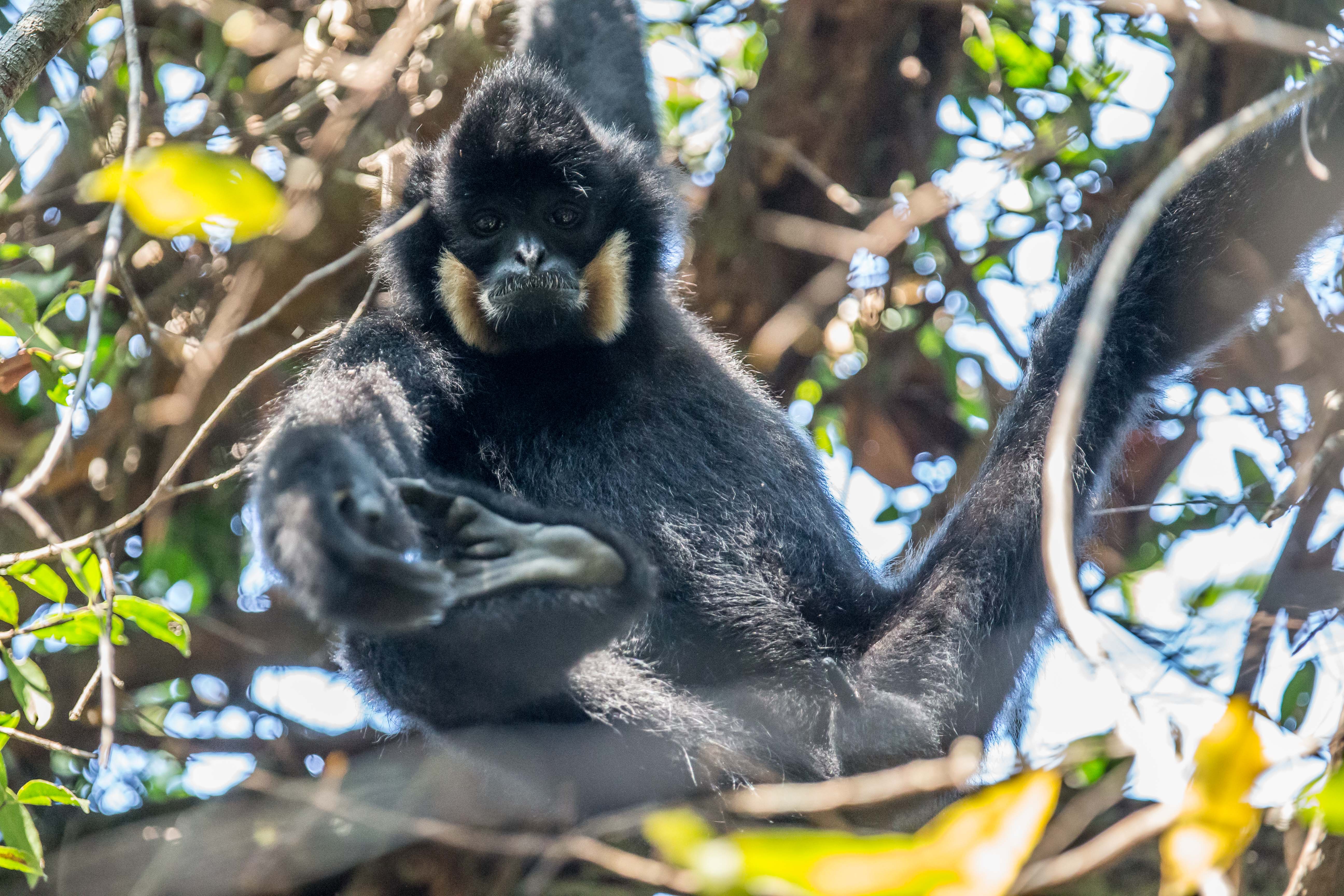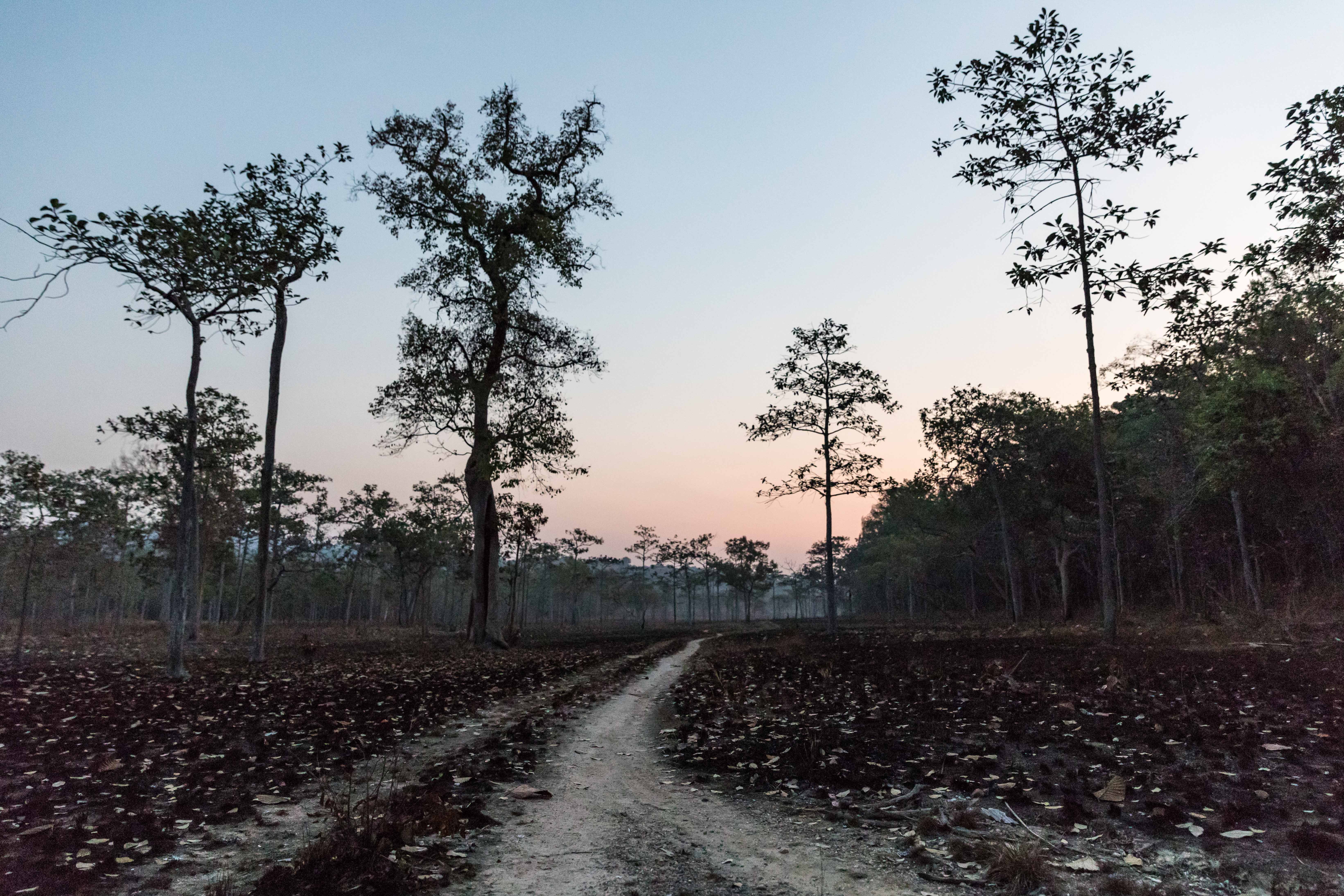Cambodia’s Beautiful Gibbons Could Be Vulnerable to COVID-19, Study Warns
September 28, 2020The early morning calls of gibbons swinging from limb to limb in the dense forests of Cambodia are a prime wildlife draw in the Southeast Asian country.
But as pandemic restrictions ease and sightseeing resumes a new study is urging tourists to wear masks and other personal protective equipment when near gibbons, whose jittery immune systems make them more susceptible to COVID-19.

From a health standpoint Cambodia has not been hit hard by the pandemic, but the lack of international tourism is a major drain on the economy. With few travel barriers for those in country, eco-tourism operators are eagerly looking forward to November gibbon spotting season.
Loris, monkeys and gibbons are all threatened by habitat loss and deforestation in Cambodia. But hiking and trekking attractions featuring the yellow-cheeked crested gibbon are increasingly popular, with tourists paying hundreds of dollars for guided treks where they can see the ape’s unique method of “brachiating” - or swinging from tree canopies with long, gangly arms.
Australian National University researcher Jessica Williams, who authored the new study that appeared in Animal Biology in September, spent months monitoring the animals at Veun Sai-Siem Pang National Park in northeast Cambodia, and warned of the likelihood that humans could infect gibbons with the virus if proper precautions were not taken.
“We have seen COVID cross human-animal boundaries several times. It has crossed from animals to humans and we have seen it in pets,” Williams told VICE News in an interview.
“The more closer related the species are, the easier it is for a virus to cross these boundaries and infect different species of animals. Apes are obviously related to us because we are ape and we have seen respiratory diseases cross from humans to populations of gorilla and chimpanzees and it has been really bad.”
Her research shows that gibbons significantly alter their behavior as tourists enter their habitat, which could result in stress, fatigue, and a weakened immune system that leaves them less able to fight off infection.
“Resting less can have an impact on your immune system and cognitive abilities and functions so we need to make sure that the gibbons can still get enough rest with the tourism occurring,” said Williams, who is conducting similar research among gibbons in China's Mt. Gaoligong National Nature Reserve.
Williams has come up with a working list of recommendations for tourists and trip operators which is still under expert review.

They are pretty basic and similar to public health guidelines all over the world established in response to the pandemic: maintain a safe distance between you and the gibbon and avoid touching them.
“Definitely no touching them, definitely no feeding them. If you’re unwell, you really have to stay away. Diseases can definitely be transfered and you need to protect the wildlife and you need to protect yourself, too, because humans can get diseases from animals,” she said.
Williams also expects more international tourists to flock to gibbon habitats once global lockdowns are eased in many parts of the world and cash-strapped tour companies begin to aggressively market the activity.
It is important to put rules in place now.
“You have to realize that it is a privilege to be able [to see the gibbons] and that you have an impact on the wildlife. We don’t want to take this opportunity away from future generations because it is truly magical to see these animals in the wild,” she said.

